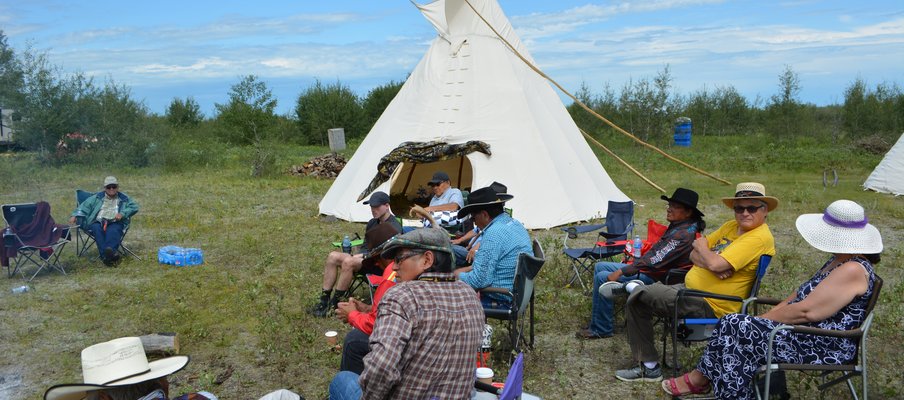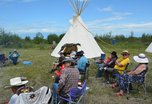Gathering Helps Tell the True Story of Chief Big Bear

Related Programs

Piapot. Poundmaker. One Arrow. These are just a few of the First Nation communities in Saskatchewan that signed treaty agreements and named their community after their Chief. But according to the history books, one Cree leader, Big Bear, along with the people in his band, were unable to negotiate a land base after other leaders agreed to the terms of Treaty 4 in the Fall of 1874.
This history inspired an Indigenous gathering called the “Gathering of the Descendants of the Big Bear Band”, as a platform to share and listen to the true stories of Chief Big Bear at the Little Pine First Nation. The event, organized by the Big Bear Cultural Society, encouraged participants to share their kinship lineage of the Big Bear Band through oral tradition, piecing together their history by memory, and stories passed down through generations.
Terry Atimoyoo is one of the volunteer coordinators for the event and says much of the history surrounding Big Bear’s life, including the circumstances of his imprisonment, are very different from the history books.
One of the stories not in the books, according to Atimoyoo, was that Big Bear attended a treaty signing prior to Treaty 4 negotiations. He said the leader had followed the buffalo south into the United States and witnessed the signing of the Fort Laramie Treaty in South Dakota.
“He saw how little the First Nations people were getting in terms of their land, and he encouraged the leaders in Treaty 4 to negotiate for more,” he says. “The Canadian history books really misaligned us First Nations people,” including how tribes dealt with injustice from the settlers and Indian agents at the time.
Another story was that after the Battle of Batoche, Big Bear, considered a hostile, surrendered, and this led to his arrest. He was charged with treason, and imprisoned for three years in Stony Mountain Penitentiary.
“Approximately 30 warriors were imprisoned for three year terms, but were released after one year. Big Bear was released because he was dying, humiliated that as a once proud Chief of his band, he was made to take care of pigs in prison. It was too much for him,” said Atimoyoo.
Upon his release, Big Bear was welcomed onto the Little Pine First Nation. He passed away while visiting Poundmaker’s community.
The Gathering held for the past two years, has continued to grow in attendance of about 250 people. The gathering featured an assembly area (outdoors around a fire) set up with a microphone. According to Atimoyoo, this circle was to encourage sharing, rather than to sit and listen. It turns out, Atimoyoo explains, that the participants were sharing stories around the kitchen table, where the food and coffee were served.
One of the challenges for the Gathering was finding people who were related to Big Bear or his band members. Atimoyoo says after 1885, Indian Affairs would “coerce families onto different reserves.” Other band members changed their names for fear of reprisal by being a member of the Big Bear Band. He notes that this made it a challenge to find people who knew the original band members’ names prior to 1885.
Atimoyoo says they are limited by centralizing the gathering in one area because there are descendants that are hundreds of miles away who cannot participate. He says one possibility for the future is getting the speakers together for the winter, and going to different communities, to go and tell these stories in communities where there are descendants of the Big Bear Band.
Plans are in the works to publish a book of the stories shared by participants. “These stories humanize us,” he says. “We can help the younger ones with their identity. This means a lot to people to know their family was part of the Big Bear Band, with a leader who was a very influential man.”
This event received funding from to SaskCulture’s Aboriginal Arts and Culture Leadership Grant. “We’re so glad that SaskCulture makes this possible,” he says. “The more we do to build up our identity, the better we have a chance of getting the younger generation to take up the legacy of the Big Bear Band.”
Atimoyoo welcomes everyone to the gathering next summer. For more information, please see the Facebook page Gathering-of-the-Descendants-of-the-Big-Bear-Band.



